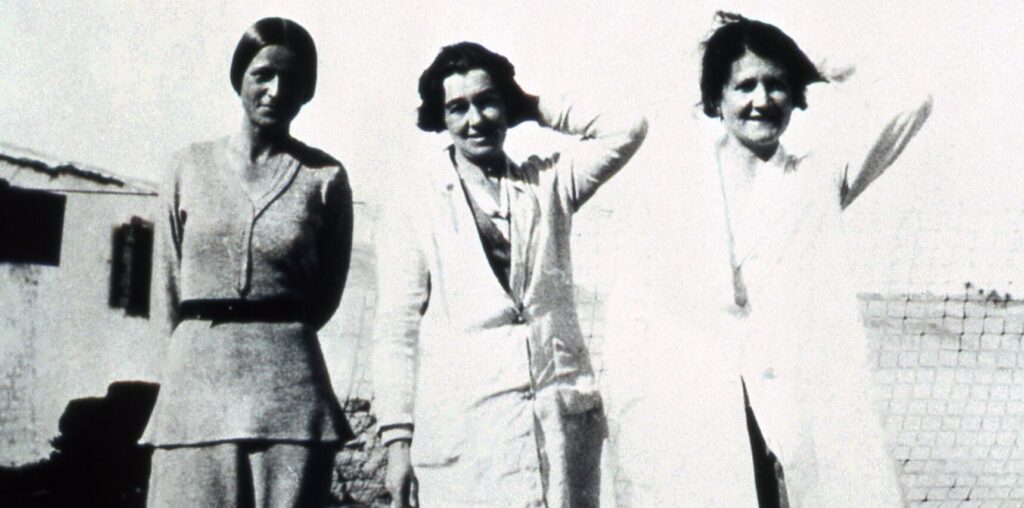Mary Charlton Jonas (1874-1950) returned to her work at the Egypt Exploration Society’s (EES) offices in the early days of 1930, refreshed and slightly tanned from her Christmas holidays in Egypt. Her desk was covered in paper: correspondence, paperwork, memos, pay packets, meeting requests, and all her other duties she had missed while she was away in Egypt with her friends, epigraphers Amice Calverley and Myrtle Broome. Mary had worked for the EES for ten years but had never been to Egypt until her visit to Abydos.

Her visit to Abydos wasn’t all holiday fun. She had gone to be the eyes and ears on the ground for Egyptologist Alan Gardiner, who was, technically, the director of the project. Amice and Myrtle had wanted to fire a copyist named Beazley for not doing the work he had been hired to do. Alan didn’t think that Beazley was as bad as Amice and Myrtle had portrayed, so he sent Mary, the trusted secretary, to the field. She quickly confirmed how bad it really was, writing to the Honorary Secretary of the EES Stephen Glanville, in December of 1929, “I’m afraid Beazley is by no means a congenial member of the party & Miss Calverley is beginning to think that solitude in the desert is better than…company. She & Miss Broome get on well & are working hard but the men scarcely pull their weight…”1 Beazley was warned that he needed to improve his work; instead, two weeks later in mid-January, he left. The women had sorted it.
When Mary got back to the EES offices, she immediately resumed her “serious work.”2 Having taken over the job from Emily Paterson in 1919, Mary quickly became a trusted colleague, friend, and administrator at the Egypt Exploration Society. For the next 20 years, Mary did much more than “basic administrative work.”3 In the archives, there are dozens, if not hundreds, of letters for Mary to and from everyone working with or for the EESD. She “organized meetings, managed project budgets and liaised with museums, subscribers, and field directors …she was the diplomatic pivot around which competing views on the significance and nature of archaeological finds for museum acquisition were balanced.”4 Mary Jonas was the lynch pin of the intellectual center of Egyptology. In her time, she was as well-known as Flinders Petrie, Howard Carter, and Lord Carnarvon.
Despite all of this, there is only one known photo of her with her name written on it, and that photo has been heavily contested. In 1929, she would have been in her mid-fifties, but in the photo, she looks almost too young. There was little, if any, personal information about her in the archives. Through some internet sleuthing, I was able to find some of her family members—nieces and nephews. They provided more photos of Mary so that we could compare them against the photo with her name on it. It definitely was her.
Mary is one of the many women who have been left out of the history of Egyptology. There is so much more that should be said about Mary and the other women who paved the way for exploration in Egypt—we just have to be tenacious and lucky enough to find the pieces of information about them hidden in the letters, diaries, and other source materials left behind. My book, Women in the Valley of the Kings is just the beginning of their untold stories.

